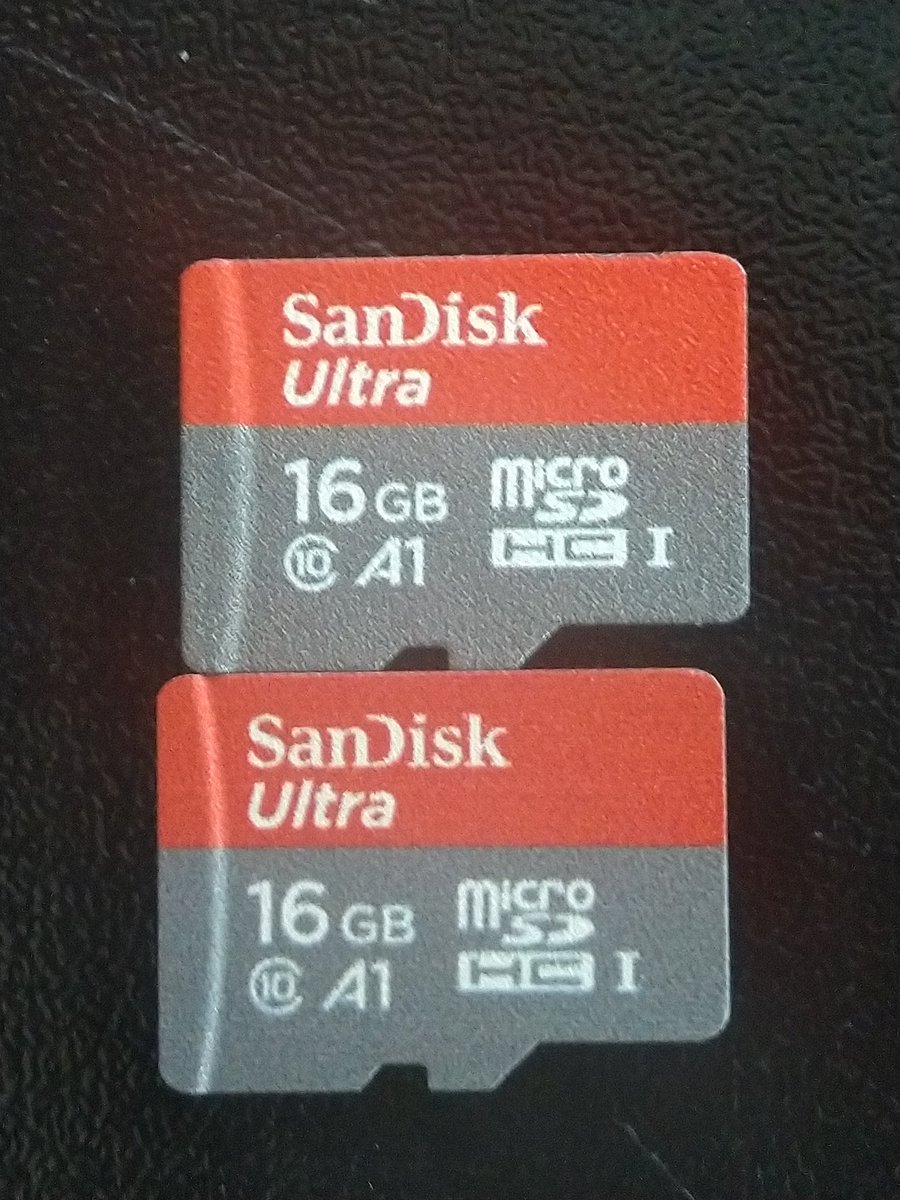For those wondering:
Bottom!
Poor printing quality is the dead givaway. Non-sharp edges say this was printed with a direct ink printer (cheap, does things in bulk)
What isn& #39;t visible is the slight banding in colors on the bottom one while the top one was obviously pad printed.
Bottom!
Poor printing quality is the dead givaway. Non-sharp edges say this was printed with a direct ink printer (cheap, does things in bulk)
What isn& #39;t visible is the slight banding in colors on the bottom one while the top one was obviously pad printed.
What I didn& #39;t show was the back. It& #39;s a more subtle giveaway, but on the back of Sandisk SD cards is a serial number and their location of manufacture.
Counterfeit ones will have this off center, or one line will be bigger than the other.
Counterfeit ones will have this off center, or one line will be bigger than the other.
The text fuzziness was the most immediate giveaway. The fact that the "Class 10" marking is so much fainter means that there& #39;s bleed from the ink.
This was likely printed on a direct to substrate printer in bulk of 1000 or more.
This was likely printed on a direct to substrate printer in bulk of 1000 or more.
There& #39;s a variant on these direct to substrate printers that run on UV inks. @strangepartscom did a whole thing on them: https://youtu.be/LPdrhi2oACc ">https://youtu.be/LPdrhi2oA... -- Super informative.
To see another form of direct to substrate printer is when @donttrythis looked at the Smithsonian graphics department: https://youtu.be/oVafAOa_UIE
These">https://youtu.be/oVafAOa_U... things are built to print directly on whatever, unlike
These">https://youtu.be/oVafAOa_U... things are built to print directly on whatever, unlike
I would hazard to guess that Sandisk& #39;s real SD cards are pad printed. This gives particularly sharp lines but also leaves a slight raised edge when the printing is completed. Here& #39;s an example of using it in textiles: https://youtu.be/aZFfcA8v88U ">https://youtu.be/aZFfcA8v8...
Pad printing is cheap in bulk, but expensive in large operation. Fly-by-night/third shift operations want the cheapest fast. Pad Printing requires more setup than the jig-based direct to substrate printers, and is really built to have one printed at a time.
The downside of direct to substrate is color reproduction: You& #39;re still using a CMYK process unless you& #39;ve spent the time to color calibrate the whole thing. This means that you won& #39;t hit anything your printer isn& #39;t calibrated to hit, and there& #39;s a lot of trial and error involved
Now, pad printing gets you perfect color reproduction every time because it& #39;s a non-CMYK layered approach. It& #39;s like a higher resolution screen print process that doesn& #39;t care about how curved your object is.
Stupidly, Pad printing is cheap when you& #39;re producing a ton of them because you have one item.
So why don& #39;t the SD card counterfeiters use pad printing?
Because it& #39;s still at this point cheaper to test 1000 cards, organize cards by number of badblocks and then print them.
So why don& #39;t the SD card counterfeiters use pad printing?
Because it& #39;s still at this point cheaper to test 1000 cards, organize cards by number of badblocks and then print them.
A bed of nails can test 100 cards at a time for bad blocks and then produce the graphics for each individual SD card and that jig can then be slapped into a direct to substrate printer and those can be packaged up much faster.
At least, that& #39;s my speculation!
I& #39;m not an expert, but I do know that the top SD card is legit (I bought it via a known good seller!) and that the bottom is fake (its serial number is 000000000 and the ID information comes back as garbage)
I& #39;m not an expert, but I do know that the top SD card is legit (I bought it via a known good seller!) and that the bottom is fake (its serial number is 000000000 and the ID information comes back as garbage)
I just happened to be looking for an SD card for my 3D printer and found the top one in my stash, realized it was the same as the one that I currently had in my printer that was exhibiting some interesting complications, and figured I& #39;d show them off!

 Read on Twitter
Read on Twitter


